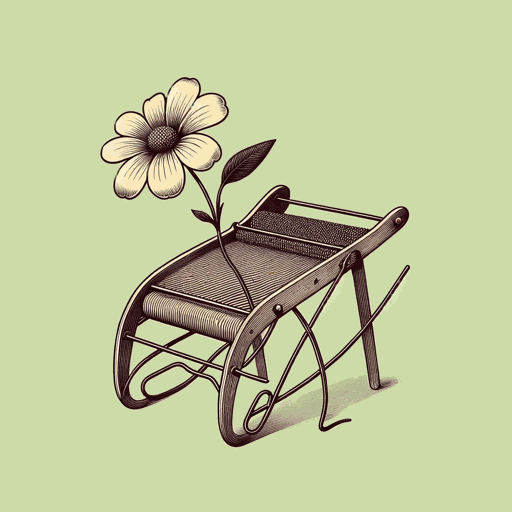46 pages • 1 hour read
Tera W. HunterTo ‘Joy My Freedom: Southern Black Women’s Lives and Labors after the Civil War
Nonfiction | Book | Adult | Published in 1997A modern alternative to SparkNotes and CliffsNotes, SuperSummary offers high-quality Study Guides with detailed chapter summaries and analysis of major themes, characters, and more.
Summary and Study Guide
Overview
Published in 1997, Tera W. Hunter’s To ‘Joy My Freedom: Southern Black Women’s Lives and Labors after the Civil War is a history of working-class African-American women’s lives in Atlanta, Georgia, from Emancipation to World War I. The text examines the interplay between the racial repression African-American women faced during this time and the resistance they enacted as they sought to exercise their freedom as laborers. The book is winner of several awards, including: the 1998 H. L. Mitchell Award, Southern Historical Association; the 1997 Book of the Year Award, International Labor History Association; and the 1997 Letitia Woods Brown Memorial Book Award, Association of Black Women Historians.
In the preface, Hunter discusses the challenges of writing working-class black women’s history, namely, the lack of primary sources focused on this group. In the prologue, Hunter explains that African-American women were largely confined to domestic work. They engaged in constant struggles to define themselves outside of the labor, while white employers constantly sought to impose an identity that defined African-American women solely as laborers.
In Chapter 1, Hunter documents the lives of working-class black women during the Civil War and in its immediate aftermath in Atlanta. Hunter observes that African-American women were already engaged in contests over their labor with white employers. African-American women flocked to Atlanta with high hopes of exerting more control over their lives.
In Chapter 2, Hunter focuses on the period of Reconstruction. The African-American population in Atlanta doubled, and much of that growth included women. Women came to Atlanta to escape poor conditions in the rural South, pursue economic opportunities, and reconstruct their families and communities after slavery. In this early moment of labor-relations renegotiation between blacks and whites, black domestic workers engaged in multiple forms of resistance that whites countered time and again.
In Chapter 3, Hunter paints a detailed picture of the daily lives of working-class black women in Atlanta. As the city modernized through the construction of rail lines and services, its wards and districts became racially divided and defined. In Atlanta’s black neighborhoods, working-class black women brought in the lion’s share of the income as domestic workers. Black women engaged in many forms of resistance to counter white efforts to exert control over their labor. Outside of work, African-American domestics had full lives: They pursued opportunities for leisure in the burgeoning entertainment industry, joined mutual support groups and secret societies, went to church, and contributed to the survival of their families. They also created communal workspaces and connections that provided nonmonetary support in the face of very low wages.
In Chapter 4, Hunter uses multiple sources to examine the washerwomen’s strike in the lead-up to the 1881 International Cotton Exposition, a public relations effort by Atlanta industry designed to boost Atlanta’s reputation as a part of the New South. The notion that the South was open for business largely depended on keeping the black labor force docile and poorly paid. The washerwomen’s strike undercut this image, and women mobilized the community resources they had built in previous years as a means of organizing themselves politically. Their actions proved that whites would not be allowed to exercise absolute control over labor relations.
In Chapter 5, Hunter describes the hardening of legally sanctioned white supremacy with the race riot of 1906. Legal segregation was apparent in housing patterns, disparities in public/municipal services, and police brutality. The riot showed the willingness of whites to use brute force and violence to exercise control over African Americans in Atlanta, and the Jim Crow laws passed during this period codified the separation of African Americans from whites in even the most minute social interactions.
In Chapter 6, Hunter outlines how segregation accelerated the growth of black self-help organizations such as churches, educational institutions, and the Neighborhood Union (a settlement house that served African Americans). These institutions provided social services that the municipal government would not. They were collaborative, grass-roots efforts between middle-class African-American women and working-class women up until 1920, when social work became more professionalized.
Chapters 7 and 8 explore the cultural and political significance of leisure in the lives of Atlanta’s working-class black women. Leisure, including public dancing, allowed African-American women to assert control over their bodies and labor by engaging in non-productive activities that did nothing to enhance the profits and aims of white employers and businesses. Chapter 8 focuses on how dancing to the blues, in particular, demonstrated a nascent black modernity. White efforts and black middle-class efforts to regulate black working-class leisure resulted from anxiety about black representation and a desire for control.
Chapter 9 presents a history of the discourse linking tuberculosis to black female domestics. Near the end of the 19th century, tuberculosis shifted from being a genteel white person’s disease to a black person’s disease—and then shifted again to become a black female domestic’s disease by the turn of the century. The change was a function of white Southerners’ view of black female bodies as a metaphor for social disorder, occasioned by the presence of black workers in their domestic space. Public health efforts to contain the contagion almost always hinged on more and more intrusive regulation of black women’s bodies, neighborhoods, and domestic space.
In Chapter 10, Hunter discusses the mass exit of African Americans from Atlanta and the South as an effort to escape white domination after the pendulum swung in whites’ favor during World War I. African Americans left the South to escape violation of their civil rights and violence, but they also left to pursue greater economic opportunities outside of the South.

